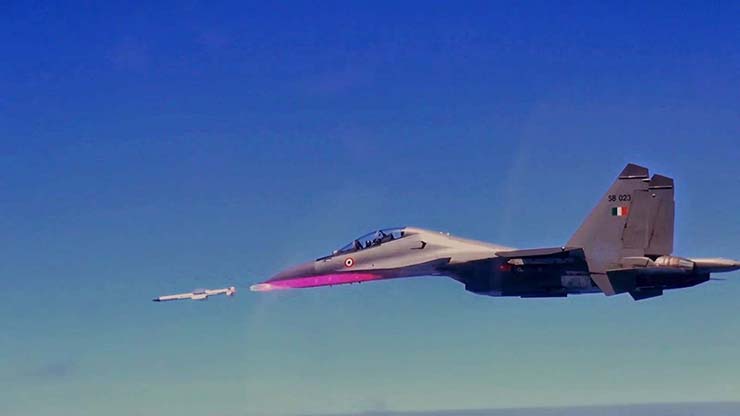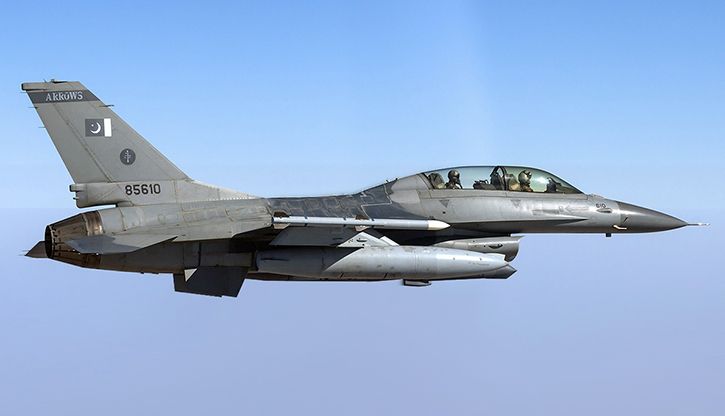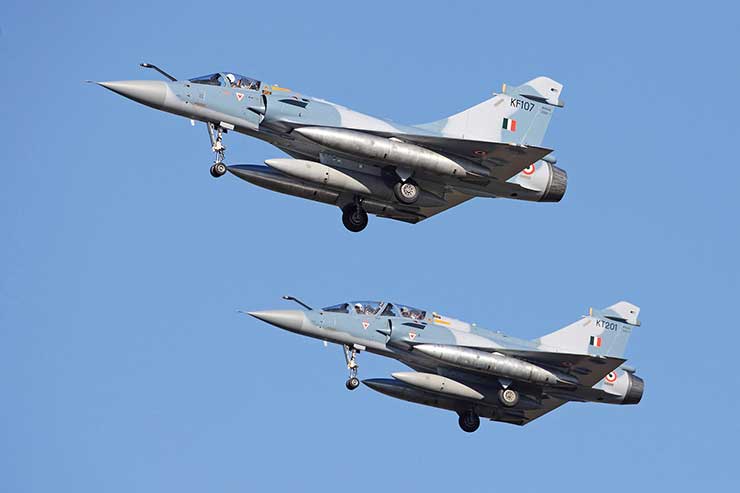
It was only a few days back that the indigenous Astra Mk-I air-to-air missile was test-fired from an LCA Tejas Mk-1 fighter aircraft, with the missile intended for integration with the Indian Air Force’s (IAF’s) Tejas Mk-1A fighter aircraft as a standard beyond-visual-range (BVR) missile. On 31st May 2022, the Indian Ministry of Defence (MoD) signed a contract worth INR 2,971 crores with a Hyderabad-based public-sector enterprise (PSE) to supply Astra Mk-I missiles for deployment on fighter aircraft of the IAF and the Indian Navy (IN). Further, the IAF test-fired the longer ranged Astra Mk-II BVRAAM in October last year (see Figure 1).
The Astra Mk-I and Mk-II variants shall certainly be attractive options for countries operating Russian platforms. Nations like Indonesia, Malaysia, and Vietnam may choose to buy Astra missiles, since they would be compatible with their Su-30 fighter aircraft and superior to the older Russian R-77 beyond-visual-range-air-to-air missile (BVRAAMs) in their stockpiles.
Based inter alia on its capabilities and cost-effectiveness, the new weapon system is poised to become a success not only with the Indian armed forces, but also in the defence export market.
Capability
The Astra Mk-I can engage targets flying at speeds of up to Mach 1.4, and at distances of up to 110 kms. Post-launch, the missile utilises an inertial mid-course guidance from its mother aircraft via a secure data link. Thereafter, for terminal guidance, the missile uses active radar homing from its seeker’s head. While a Russian active radar seeker was employed during developmental trials, a Ku-band form-fitting indigenous radar was subsequently developed and deployed on all Astra missiles, thus providing India with its first BVRAAM with an indigenous active radar seeker.
The Astra Mk-I is supposed to carry a 15 kg pre-fragmented high explosive warhead with a radio proximity fuse for ignition. The missile’s electronic counter-countermeasure (ECCM) capacity enables unhindered operation in dense electronic countermeasure (ECM) environments. With a speed of Mach 4.5 and launch clearance of up to 20 kms, the missile can be launched either by the mother (missile-carrying) aircraft or in buddy mode.
The Astra Mk-I and Mk-II missile variants do not appear very dissimilar. The latter utilises a dual pulse solid rocket motor, consequently yielding a greater reach. Along with its smokeless propulsion system, the Mk-II variant is also expected to house an active electronically scanned array (AESA) radar seeker as well as a laser proximity fuse.
Context
Astra missiles often touted as a significant improvement over comparable imported BVRAAMs, are intended to provide game-changing capabilities to the IAF. In particular, the missiles shall provide the offensive punch to the IAF’s Sukhoi Su-30 MKI fighter aircraft that they deserve, and which Russian BVRAAMs are unable to provide.
Post IAF’s Balakot bombardment in 2019, the Pakistan Air Force (PAF) possessed an edge over the IAF during the former’s riposte because the PAF’s F-16 fighter aircraft were equipped with the AIM-120 C-5 Advance Medium Range Air-to-Air Missiles (AMRAAMs) while IAF fighter jets were armed with the Russian R-77, which are somewhat inferior in capabilities – more comparable to the AIM-120 B (see Figure 2). On the other hand, it is also true that work was in progress even at that time to address this issue via the Astra missile programme, which has been pursued since the early 1990s.

Since the induction of the Astra Mk-I missile, the IAF has been able to match most capabilities of the AIM-120 C-5 missile and even surpass the latter in some respects, although subsequent versions of the AMRAAM – especially the C-7 – are superior to the Astra Mk-I in terms of range and some other features. The induction of the Astra Mk-II is intended to once again bridge this capability gap.
Cost
The Astra missile is not just capable, but also comes with an attractive price tag. The Astra Mk-I test-fired from the LCA Tejas costs just USD 0.7 million per unit, whereas the AMRAAM costs USD 0.9 – 1 million per unit. It is also noteworthy that the figure of 0.9 – 1 million per unit is for a mass-produced missile in the AIM-120 C-5 category, and therefore inclusive of the benefits of economies of scale. Later versions shall be much more expensive. This is not the case for the Astra missile, however, which has only been produced in limited numbers for testing purposes and is yet significantly cheaper than the AMRAAM.
The launcher for the Astra missile costs around USD 0.2 million. But this is a one-time cost after which further expenses need only be incurred on missiles and not the reusable launcher. Hence, excluding the cost of the launcher, the Astra Mk-I missile only costs approximately USD 0.5 million. Moreover, this price is expected to witness a major decline upon mass production, further enhancing the sustainability of its usage.
Notably, in 2012, approximately 500 MICA missiles were acquired for the IAF’s Mirage-2000 fighter jets at an aggregate order value of roughly USD 1.2 billion (see Figure 3). The unit cost incurred for those missiles ultimately boiled down to around USD 2.7 million. Hence, a missile less capable than the Astra Mk-I was acquired at more than three to four times the cost of the Astra Mk-I missile. If a similar trajectory materialises in the case of the Astra Mk-II missile, then a sizeable export potential could be tapped.

To conclude, it could well be surmised that the Astra Mk-I and Mk-II variants shall certainly be attractive options for countries operating Russian platforms. Nations like Indonesia, Malaysia, and Vietnam may choose to buy Astra missiles, since they would be compatible with their Su-30 fighter aircraft and superior to the older Russian R-77 BVRAAMs in Indian stockpiles. In fact, international sanctions imposed against Russia post the outbreak of the Ukraine War may have rendered it harder for R-77 operators to place fresh orders for that missile, further boosting the export prospects of the Astra missile.
As things stand, the Astra Mk-I missile has achieved a level of maturity, which enables it to be credibly pitched as a world-class BVRAAM globally. Notwithstanding substantial domestic orders by the Indian Armed Forces, therefore, the Indian MoD must conduct internal deliberations to determine the method to secure Astra missile export orders, as well as the missile system’s potential export destinations. To this end, it would be useful to prepare a list of trusted partner countries to which the cutting-edge Indian defence technology can be provided.
-The writer is serving as a Fellow at Observer Research Foundation. The views expressed are personal and do not necessarily reflect the views of Raksha Anirveda








